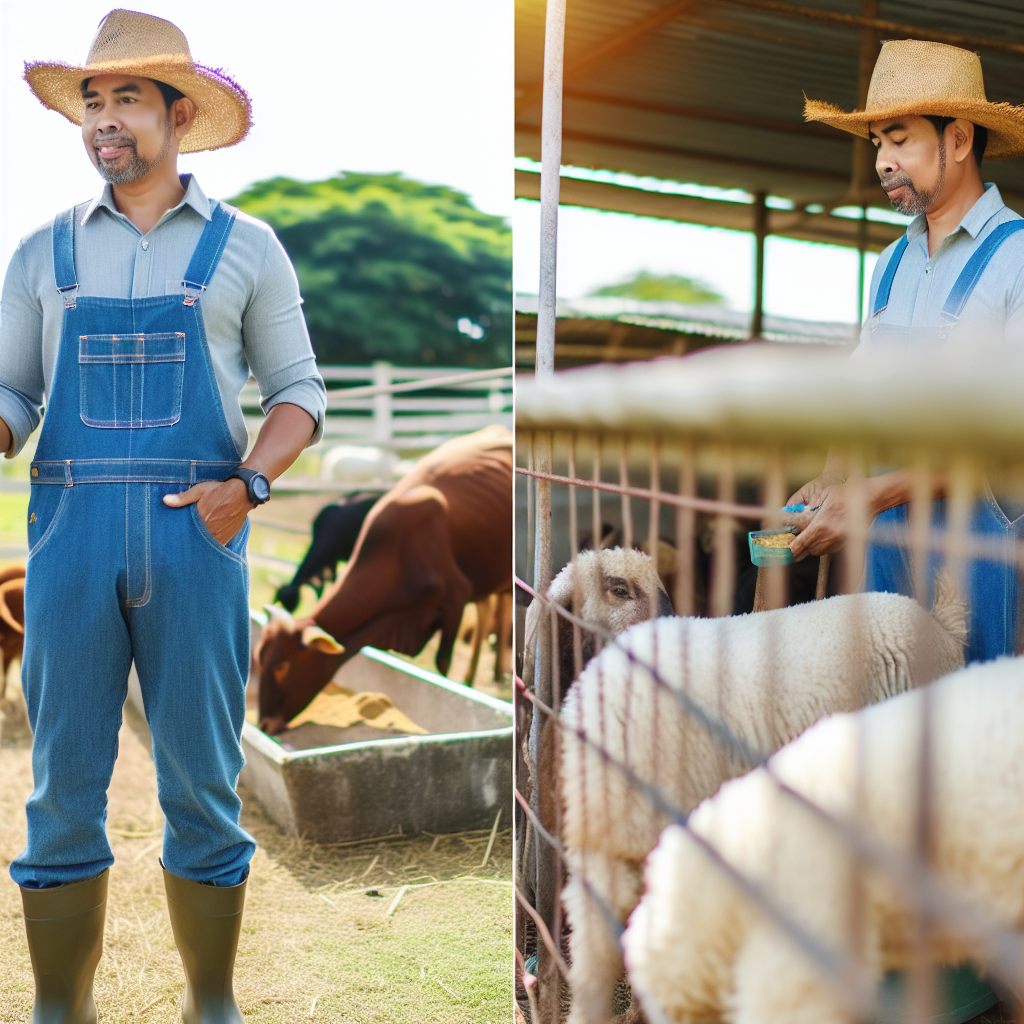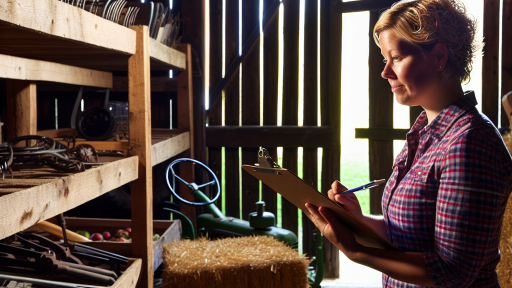Introduction to Animal Welfare in Modern Farming
Animal welfare has emerged as a critical issue in modern farming practices.
This development reflects changing societal values regarding the treatment of animals.
Consumers now demand higher welfare standards for farm animals.
Farmers and producers are responding to these expectations.
Consequently, many farms are implementing better welfare practices.
Understanding Animal Welfare
Animal welfare encompasses the physical and psychological well-being of animals.
It involves providing adequate living conditions and proper care.
In this regard, the Five Freedoms framework serves as a guiding principle.
This framework focuses on freedom from hunger, discomfort, pain, fear, and to express normal behavior.
Advancements in Welfare Practices
Technological advancements have improved animal welfare standards dramatically.
For example, precision farming techniques enable better monitoring of animal health.
Moreover, automated systems can enhance feeding and habitat conditions.
This technology allows farmers to respond quickly to any issues.
The Role of Legislation and Regulation
Government regulations also play a vital role in promoting animal welfare.
Authorities worldwide have adopted stricter laws governing animal treatment.
Transform Your Agribusiness
Unlock your farm's potential with expert advice tailored to your needs. Get actionable steps that drive real results.
Get StartedThese regulations must be enforced to ensure compliance among farmers.
Furthermore, animal welfare organizations advocate for continuous improvement.
Consumer Influence on Farming Practices
Consumer awareness about animal welfare drives change in farming practices.
More people are seeking products certified for humane treatment of animals.
This trend encourages farmers to adopt more humane practices.
Businesses are recognizing the importance of transparency in their operations.
The Benefits of High Welfare Standards
Implementing high welfare standards benefits both animals and farmers.
Healthy animals produce better quality products, which enhances profitability.
Additionally, improved welfare can lead to greater consumer loyalty.
As a result, farms may experience positive reputational impacts.
Historical Perspective on Animal Welfare Practices
Early Animal Welfare Concepts
Historically, animals held significant roles in human societies.
They provided food, labor, and companionship.
Initially, people recognized their value but often prioritized utility over well-being.
In ancient civilizations, this led to neglect and abuse in many farming practices.
Over time, philosophical ideas began to shift perspectives on animals.
The Rise of Animal Welfare Movements
The 19th century marked the emergence of organized animal welfare movements.
Activists like Henry Bergh in the United States advocated for animals’ rights.
Bergh founded the American Society for the Prevention of Cruelty to Animals in 1866.
Such movements aimed to improve living conditions for farm animals.
They emphasized humane treatment in both farming and transportation.
Legislation and Animal Welfare
Throughout the 20th century, various countries enacted animal welfare laws.
Legislation aimed to enhance the protection of animals in agriculture.
For example, the Animal Welfare Act was established in the U.S. in 1966.
This act set standards for the treatment of animals in research and exhibition.
Showcase Your Farming Business
Publish your professional farming services profile on our blog for a one-time fee of $200 and reach a dedicated audience of farmers and agribusiness owners.
Publish Your ProfileMany countries followed suit, reflecting growing concern for animal rights.
Modern Farming and Changing Attitudes
Today’s farming practices face scrutiny over animal welfare standards.
Consumers increasingly demand humane treatment of farm animals.
This shift is evident in the rise of organic and free-range farming.
Many farmers now implement better practices to meet these demands.
For instance, some use pasture-based systems for livestock rearing.
Balancing Productivity and Welfare
Modern agriculture grapples with the balance between productivity and animal welfare.
Technological advancements can enhance animal living conditions.
However, maximizing efficiency often conflicts with humane practices.
As a result, farmers must navigate this complex landscape carefully.
Ongoing dialogue about ethics is crucial for future improvements.
Key Principles of Animal Welfare
The Five Freedoms
The Five Freedoms guide modern animal welfare practices.
These principles help ensure the well-being of farm animals.
First, animals must have freedom from hunger and thirst.
This means providing adequate food and water at all times.
Next, animals require freedom from discomfort.
Proper shelter and a comfortable environment are essential.
Additionally, animals should have freedom from pain, injury, and disease.
Regular veterinary care ensures their health and well-being.
Furthermore, animals need freedom to express normal behavior.
This freedom allows for natural interactions and socialization.
Lastly, animals must have freedom from fear and distress.
A calm and stress-free environment promotes better health.
Implementation of the Five Freedoms
Farmers play a key role in implementing these freedoms.
They should develop management practices that prioritize welfare.
For instance, providing space for animals to roam is crucial.
Feeding practices should promote health and hygiene.
Additionally, proper housing conditions support animal comfort.
Farmers must ensure that animals receive timely veterinary care.
Finally, creating a stress-free environment is vital.
Training staff on handling techniques can reduce fear in animals.
Benefits of Following the Five Freedoms
Following these principles benefits both animals and farmers.
Healthy animals lead to higher productivity and profitability.
Additionally, improved animal welfare enhances public perception.
Consumers increasingly demand ethically raised products.
Thus, improving animal welfare can open new market opportunities.
Furthermore, maintaining animal welfare can decrease losses.
Healthy animals are less prone to diseases and injuries.
Ultimately, implementing the Five Freedoms fosters a sustainable farming system.
Uncover the Details: Agri-Tourism Ideas to Boost Your Farming Business
Showcase Your Farming Business
Publish your professional farming services profile on our blog for a one-time fee of $200 and reach a dedicated audience of farmers and agribusiness owners.
Publish Your ProfileCurrent Regulations and Standards Governing Animal Welfare
Legal Framework
The legal framework for animal welfare varies by country.
In the United States, the Animal Welfare Act sets basic standards.
However, this act does not cover all animals, such as farmed fish.
European countries often have stricter regulations in place.
The EU has comprehensive laws governing animal welfare on farms.
National Standards
Many countries establish national standards for agricultural practices.
For instance, the UK follows guidelines set by the Farm Animal Welfare Committee.
These standards promote better treatment of farm animals.
In Australia, the Model Code of Practice provides detailed welfare guidelines.
These codes ensure humane treatment across various farming practices.
Certifications and Labels
Various certifications help consumers choose humanely raised products.
Examples include certified humane and organic labels.
These labels often reflect compliance with specific welfare standards.
They provide assurance to consumers regarding animal treatment.
Enforcement and Compliance
Enforcement of animal welfare regulations can be challenging.
Regulatory bodies often struggle with limited resources.
Inspections are crucial for ensuring compliance in farms.
However, penalties for violations can vary widely.
Consequently, heightened awareness is vital for improved enforcement.
Public Awareness and Advocacy
Public awareness plays a key role in improving animal welfare.
Advocacy groups often push for stricter regulations.
They also educate consumers about animal treatment practices.
This awareness can lead to increased demand for humane products.
As a result, many farmers adopt better animal care practices.
Explore Further: Enhancing Customer Experience in Farm Sales
Tecnological Innovations Impacting Animal Welfare in Agriculture
Precision Livestock Farming
Precision livestock farming uses technology to monitor animal health in real-time.
Farmers implement sensors that track vital signs and behavior patterns.
This approach helps identify health issues early.
Moreover, it allows for tailored nutritional programs for each animal.
Automated Feeding Systems
Automated feeding systems optimize diets for livestock.
These systems ensure animals receive the right nutrients at the right time.
Consequently, animals experience better growth rates and health.
Additionally, these systems reduce food waste and labor costs.
Enriched Environments
Many farms now utilize technology to create enriched living spaces for animals.
For example, they enhance housing systems to allow for natural behaviors.
Animals enjoy more space and stimulating environments.
This change leads to improved mental well-being and social interactions.
Data-Driven Decision Making
Farmers increasingly rely on data analytics to improve animal welfare.
Data helps in understanding animal needs and diseases effectively.
Consequently, farmers can make informed decisions on management practices.
Showcase Your Farming Business
Publish your professional farming services profile on our blog for a one-time fee of $200 and reach a dedicated audience of farmers and agribusiness owners.
Publish Your ProfileThis results in healthier animals and enhanced productivity.
Robotics in Farming
Robot technology has entered the farming sector significantly.
Robots perform tasks such as feeding and milking with precision.
This technology frees up time for farmers to focus on animal care.
As a result, it enhances the overall welfare of the livestock.
Remote Monitoring Solutions
Remote monitoring technologies provide round-the-clock surveillance of farms.
Farmers can use cameras and drones to observe animal behavior.
This capability allows immediate intervention if issues arise.
Furthermore, it contributes to a safe and secure environment for animals.
Find Out More: Community Supported Agriculture for Small Farmers
The Role of Consumer Awareness and Demand for Ethical Farming
Understanding Consumer Awareness
Consumers today are more informed than ever about farming practices.
This awareness significantly influences the agricultural industry.
Informed customers tend to prefer products with ethical certifications.
They seek transparency in how animals are treated in farming operations.
Moreover, consumers are increasingly willing to pay higher prices for humane products.
The Shift in Demand for Ethical Products
There is a notable shift in consumer demand favoring ethical farming practices.
This trend encourages farmers to adopt more humane methods.
As a result, many producers are transitioning to cage-free and pasture-raised systems.
Consequently, this movement promotes better animal welfare standards.
The Impact of Social Media on Awareness
Social media platforms play a crucial role in raising awareness.
Individuals share experiences and information on various farming practices.
This sharing often leads to widespread public discourse on animal rights.
Furthermore, hashtags and campaigns mobilize larger audiences to demand change.
As such, consumers now have a voice that can shape industry policies.
Companies Responding to Consumer Demands
In response, many companies are reformulating their sourcing practices.
Leading brands are now prioritizing ethical treatment of animals.
Some organizations even go as far as setting ambitious welfare goals.
This includes commitments to eliminate cages for egg-laying hens.
Additionally, they engage in partnerships with animal welfare organizations.
The Future of Ethical Farming
The growing demand will likely push more farms toward humane practices.
As consumers continue to advocate for ethical treatment, changes will follow.
Ultimately, this will lead to a more sustainable future for farming.
Ethical farming benefits not just animals, but also the environment and consumers.
It’s imperative that we maintain this momentum through continued advocacy.
Uncover the Details: Sustainable Livestock Management Tips

Case Studies: Successful Implementation of Animal Welfare Practices
The Happy Hen Café
The Happy Hen Café promotes free-range chicken farming.
They provide ample space for hens to roam and nest.
This practice alleviates stress in the flock.
Consequently, the hens produce high-quality eggs.
Additionally, customer satisfaction has increased significantly.
Showcase Your Farming Business
Publish your professional farming services profile on our blog for a one-time fee of $200 and reach a dedicated audience of farmers and agribusiness owners.
Publish Your ProfileFarmers receive training to maintain these welfare standards.
Green Pastures Farm
Green Pastures Farm emphasizes grass-fed cattle practices.
They rotate grazing areas to maintain pasture health.
This method enhances animal well-being and meat quality.
Moreover, it promotes healthier ecosystems surrounding the farm.
The farm has seen a rise in organic certification and demand.
Local communities support Green Pastures for its eco-friendly approach.
Sunny Meadows Sanctuary
Sunny Meadows Sanctuary rescues and rehabilitates farm animals.
The sanctuary provides lifelong care for various species.
Visitors report transformative experiences through their interactions.
Education programs teach the public about animal welfare issues.
As a result, community awareness of ethical farming practices grows.
Sunny Meadows inspires many individuals to advocate for animal rights.
Farm-to-Table Initiatives
Farm-to-table initiatives connect consumers with local farmers.
These projects ensure humane treatment of livestock.
Participating farms commit to animal welfare standards.
This practice promotes transparency in food sourcing.
Consequently, consumers make informed choices about their food.
Local chefs often highlight these farms’ produce on their menus.
Sustainable Livestock Farming Coalition
The Sustainable Livestock Farming Coalition leads by example.
It establishes best practices for animal welfare across the industry.
Members share resources and knowledge to improve conditions.
Many farms report enhanced productivity and animal health.
Consumer trust in their products has also increased.
As a collective, they advocate for policy changes in agriculture.
Challenges and Controversies Surrounding Animal Welfare in Farming
Current Farming Practices
Modern farming practices often prioritize efficiency over animal welfare.
Many farms utilize confinement systems for livestock.
These systems can restrict natural behaviors in animals.
Consequently, animals may experience stress and suffering.
Organizations like Animal Welfare Institute advocate for better practices.
Ethical Considerations
Ethical concerns about animal treatment are increasingly prominent.
Many consumers demand higher welfare standards for farm animals.
This shift influences purchasing decisions in the market.
However, some argue that animal welfare regulations can be onerous for farmers.
As a result, a debate arises between welfare and economic viability.
The Role of Legislation
Legislation surrounding animal welfare varies widely across regions.
Some countries have laws mandating humane treatment of livestock.
Yet, enforcement of these laws often remains weak.
This leads to inconsistencies in welfare practices globally.
Additionally, lobbying by agricultural businesses complicates reform efforts.
Showcase Your Farming Business
Publish your professional farming services profile on our blog for a one-time fee of $200 and reach a dedicated audience of farmers and agribusiness owners.
Publish Your ProfileConsumer Awareness and Demand
Consumer awareness significantly impacts animal welfare practices.
Many people now seek products labeled as humane or organic.
This demand drives farmers to adapt practices for market access.
In response, some farms implement changes to improve conditions.
Nevertheless, the cost of such changes can be prohibitive.
Technological Innovations
Technology offers potential solutions for improving animal welfare.
Innovations can aid in monitoring animal health and well-being.
For instance, sensors can track livestock conditions in real-time.
Moreover, automated systems can enhance the living environment.
However, technology adoption varies significantly among farmers.
Future Directions
The future of animal welfare in farming remains uncertain.
Increased public scrutiny may accelerate positive changes.
Conversely, resistance from traditional farming practices may hinder progress.
Ultimately, collaboration among stakeholders is crucial.
Producers, consumers, and policymakers must work together for improvement.
Future Trends in Animal Welfare and Sustainable Farming Practices
Emerging Technologies in Animal Welfare
Technological advancements enhance animal welfare efficiently.
For instance, automated feeding systems allow for precise nutrition.
Moreover, remote monitoring systems ensure animals receive timely care.
Such innovations promote healthier livestock and increased productivity.
Consumer Demands Driving Change
Increasing consumer awareness is shaping farming practices.
Many buyers today prioritize ethically sourced animal products.
This shift compels farmers to adopt more humane practices.
Consequently, transparency in farming operations becomes paramount.
Sustainable Practices Gaining Traction
Sustainable farming offers numerous benefits for animal welfare.
Rotational grazing improves soil health while preventing overgrazing.
This method provides animals with fresh pasture regularly.
Additionally, integrated pest management reduces the need for harmful chemicals.
Regulatory Changes and Compliance
Governments worldwide are enforcing stricter animal welfare regulations.
Farmers must adapt to ensure compliance with evolving laws.
These regulations often lead to improved living conditions for livestock.
Furthermore, they promote ethical treatment throughout the supply chain.
Collaboration Between Stakeholders
Collaboration is essential for advancing animal welfare initiatives.
Nonprofits, farmers, and government bodies are joining forces.
This partnership enhances resources and knowledge-sharing opportunities.
Ultimately, it creates a more sustainable agricultural system.
Education and Training for Farmers
Ongoing education helps farmers implement best practices.
Training programs focus on humane animal handling techniques.
Moreover, workshops cover sustainable farming methods extensively.
Such efforts ultimately improve farm productivity and animal welfare.
Additional Resources
How the Animal Ag Alliance got its start…Part I – Animal Agriculture …
Showcase Your Farming Business
Publish your professional farming services profile on our blog for a one-time fee of $200 and reach a dedicated audience of farmers and agribusiness owners.
Publish Your ProfileGuide for the Care and Use of Laboratory Animals, 8th edition …




